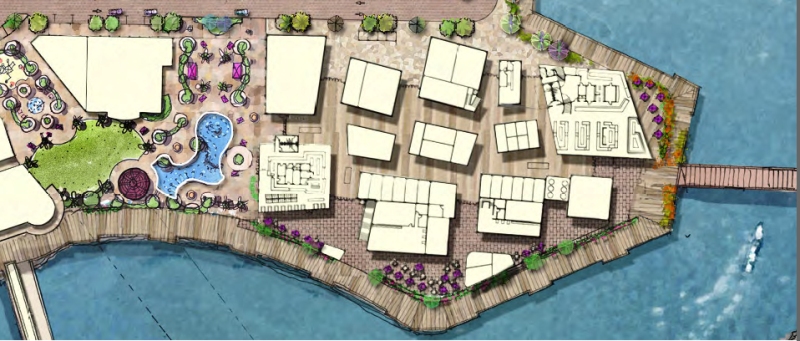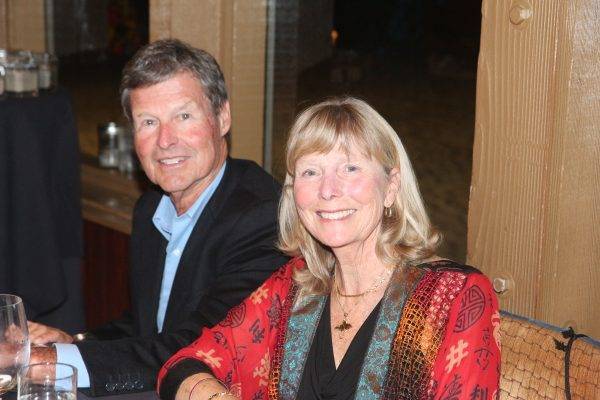
Local government turned into political theater once again Tuesday night, as a review of a market study for forthcoming CenterCal development along Redondo’s waterfront briefly turned into an ideological showcase for Redondo Beach’s City Council.
The study, developed and presented by AECOM, was the second such study commissioned for Redondo’s waterfront, focusing on the CenterCal development proposed for King Harbor. The original study, composed by Jeff Green Partners, was deemed to be unusable due to connections that tied Green to companies partnered with CenterCal in the past.
AECOM divided its study into three markets that the proposed development would take on: restaurant, dining and entertainment; creative office; and the boutique hotel markets. In short, the analysis found that the CenterCal development would fill a demand for a destination marketplace within the South Bay, noting that each of the three analyzed components would generate respectable revenue per square foot (or, in the case of the hotel, per available room).
The 305,000 sq. ft. of retail, entertainment, and dining proposed in the development is projected to meet at $174 million demand in its opening year, stabilizing to $196 million by year five, according to the study; year five sales are estimated at $780 per sq. ft. The 120 room boutique hotel is estimated to meet a $10.5 million demand in its opening year, with 65 percent occupancy rate, an Average Daily Rate (ADR) of $240, and Revenue Per Available Room (RevPAR) at $160; by year five, the hotel is projected meet a demand of $$12.9 million, with an 80 percent occupancy rate, an ADR of $240 and RevPAR at $190. The creative office space is expected to open with an Achievable Rent (AR) of $3.50 full service gross per sq. ft. in year one, with an 75 percent occupancy and $1.4 million in gross revenue; in year five, the AR is projected to remain at $3.50, but the reports estimates occupancy will increase to 95 percent and thus generate $1.8 million in gross revenue.
AECOM analyst and presenter John Robinett said, the waterfront project “seems like a sensible approach, and a reasonable project for the city to execute.”
To Mayor Steve Aspel, this was both eye-opening and relieving. “When [Councilman Steve] Sammarco asked the council to vote on a new company like yourself to do another analysis, I thought it was throwing away another $30,000 to tell us something we already knew…or worse, that something you say would kill the deal.” Instead, he said, the study proved that the redevelopment of the harbor “would be even more successful than the staff said it would be.”
After Councilman Matt Kilroy spent a few minutes attempting to ascertain how much confidence AECOM had in its numbers, eventually gaining satisfaction after being told of the bell curve projections the analysts used (“You can’t blame a guy for trying to nail you down on your confidence ratings,” he said), District 2 Councilman Bill Brand swung the discussion into the realm of redevelopment politics.
Brand brought up the proposed Harbor Village project, created as a plan should Measure B pass on March 3, rezoning the property under the AES Redondo Generating Station, asking whether or not AECOM had done traffic analysis on the development, and how the Harbor Village proposal factored into their market analysis.
Robinett admitted that they hadn’t done a traffic analysis, as it wasn’t within the scope of what they were hired to do, but that they saw the Harbor Village project as something that was too far off to matter. “The way I looked at it, we’re ahead of them. We’ll be up and running when they’re putting shovels in the ground,” Robinett said. “They’ll have to react to us…we don’t prejudice findings on speculative development where we don’t know what’s going to happen.”
Councilman Pat Aust had one pointed question, tongue planted firmly within cheek: “Would you classify this as a mall by the water?” he asked, further asking what percentage retail played within the project. Robinett responded that it was less than 50 percent, proving Aust’s point.
The council unanimously approved motions to receive and file the report from AECOM, as well as an amendment to the original contract with the company, extending the terms of their agreement with the city to June 2016. A further motion made by Brand, and seconded by Sammarco, attempted to pose an advisory vote on the Centercal project itself. With Councilman Jeff Ginsburg’s absence, the vote was split 2-2 between the council members.
Mayor Aspel abstained from casting a tie-breaking vote, sinking the motion.
“Hey, I didn’t veto it,” he said.










